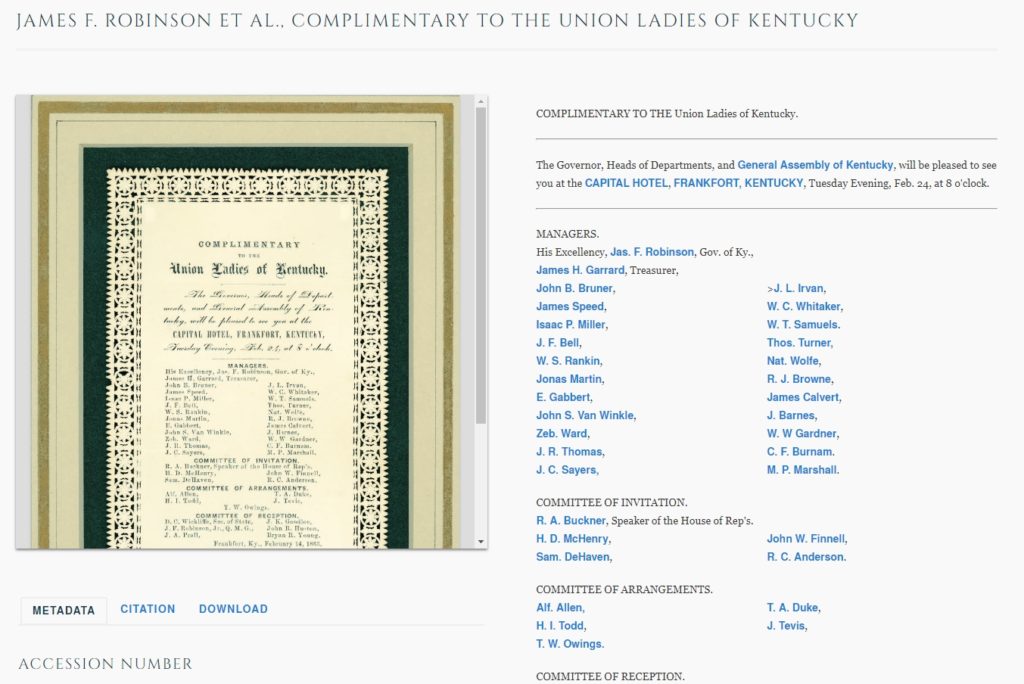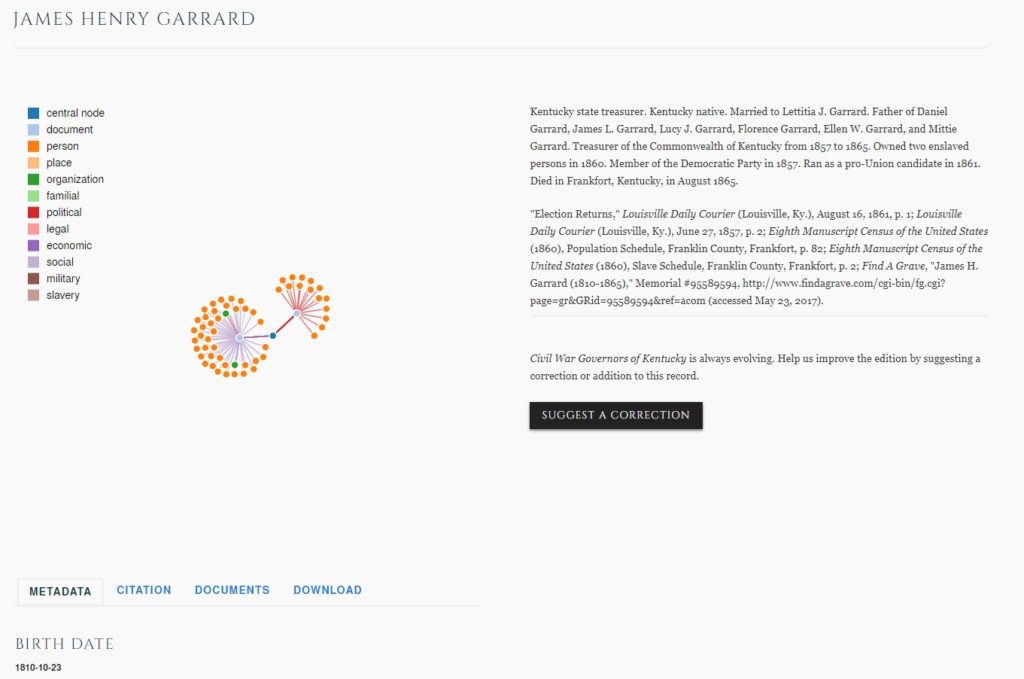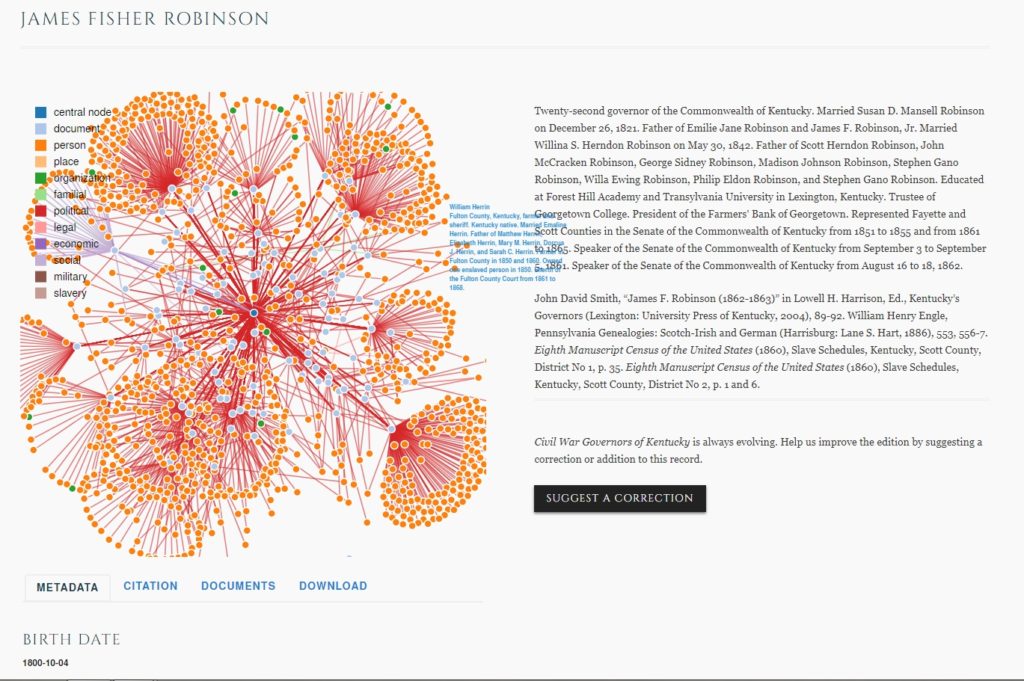2017 wraps up with a triumph for CWGK. The project published its first 350 annotated documents, with each of the people, organizations, places, and geographical features mentioned in the documents linked in the text. The basics of CWGK’s document viewer interface look the same, with the addition of the links to the annotated entities highlighted as they appear in the transcription.
When a user clicks on an highlighted name, they will navigate to the entity’s page. Whatever CWGK researchers have found about the individual will be written in a short biographical statement, with a full citation just below it. Most strikingly, for people and organizations, the user will see a social network visualization drawn from the relationships found in CWGK documents. These can range from the simple:

to the spectacular:

These annotated documents aren’t the only new edition to the CWGK site. The project has also updated over 1,600 transcriptions, delivering users the most reliable representation of the text possible.
Stay tuned for more, too. CWGK’s new system allows for rolling publication as new transcriptions and annotations are approved. From this time forward, CWGK will be an ever expanding and interconnecting network of primary and secondary material that allows new and deeper access to the lives of everyday people caught in the middle of the country’s greatest conflict.
A great deal of this editorial work was funded by a grant from the Scholarly Editions and Translations program of the National Endowment for the Humanities. Development of the annotation and visualization systems were funded by two grants from the Publishing Historical Records in Documentary Editions program of the National Historical Publications and Records Commission.
